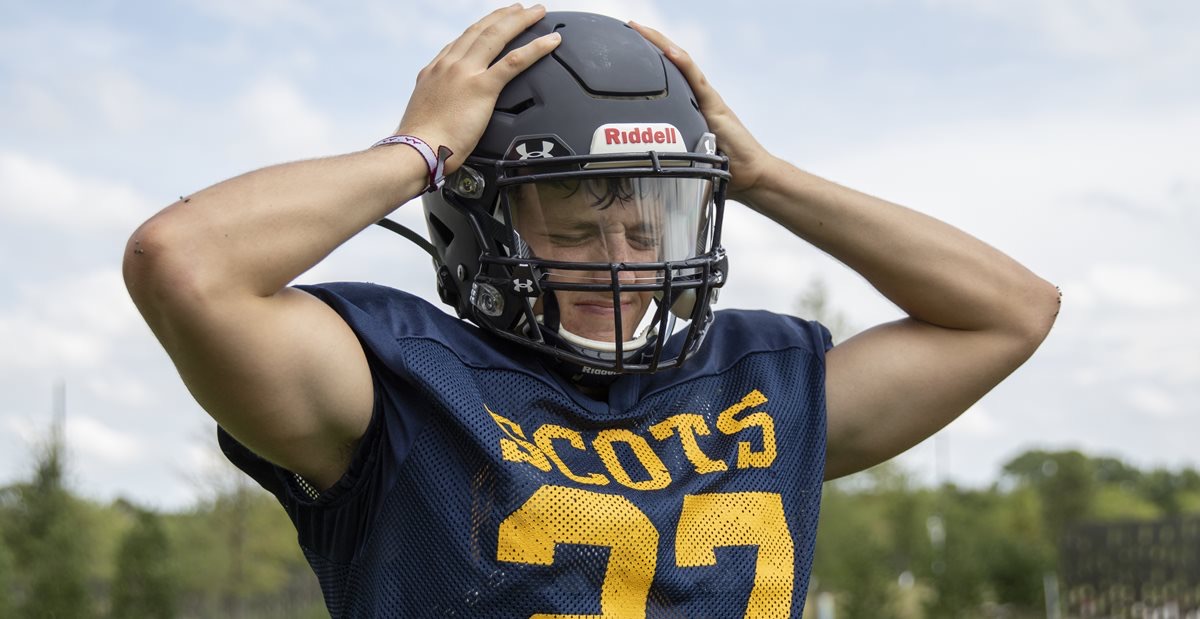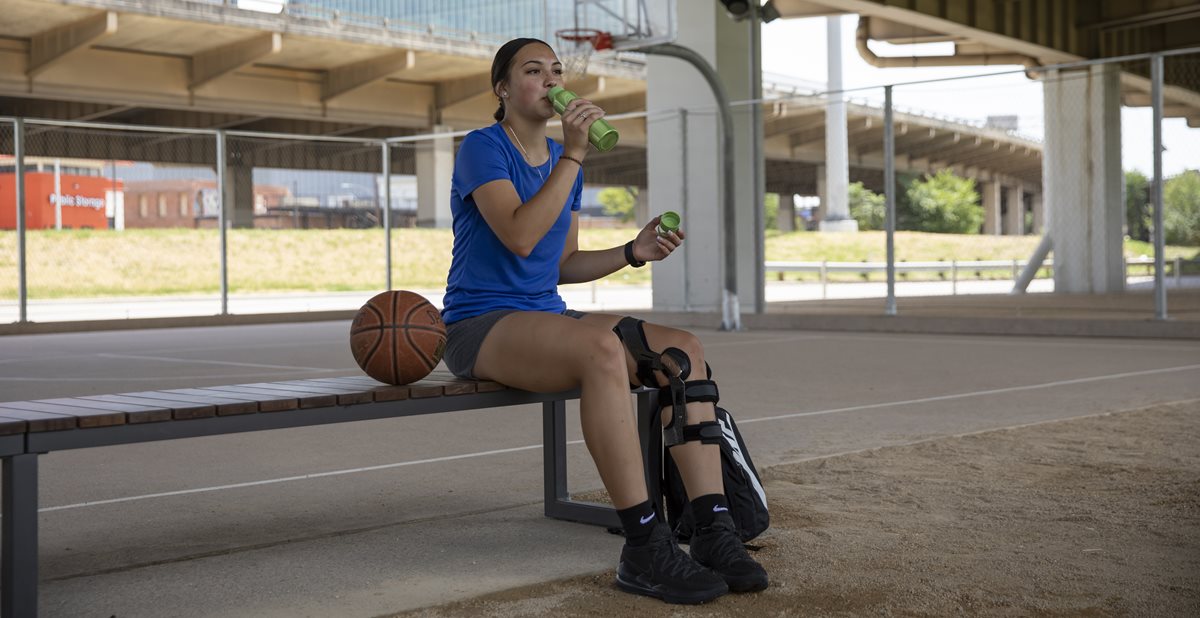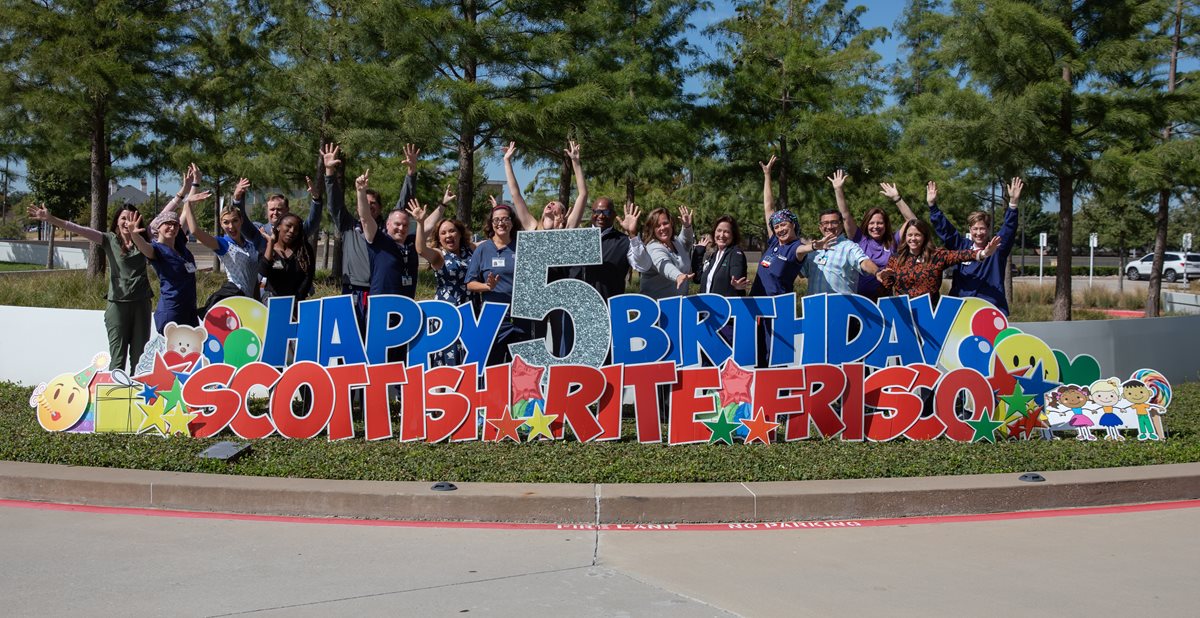
Aug 19, 2022 / Sports Medicine
Sport-Related Concussions
As you and your family ramp up training and preparation for fall football, soccer, lacrosse and more, don’t miss an opportunity to review the signs and symptoms of a sport-related concussion. Recognizing and responding early improve outcomes in young athletes.
We sat down with some of our pediatric sports medicine experts to learn about this important topic for any parent of a young athlete in our Checking In podcast. Pediatric sports medicine physician Shane M. Miller, M.D., and athletic trainer Josh Stevens, L.A.T., A.T.C., get together to chat about sport-related concussions and how they are caused, diagnosed and treated while answering some of the frequently asked questions received from parents.
“A concussion is a brain injury that creates problems with the way the brain works or functions and is typically caused by a blow to the head,” Miller says. “Most patients with a concussion experience a collision or hit with another athlete or hit their head on the ground.” Concussions can occur outside of sports as well.
If an athlete hits another athlete or hits the ground, a concussion occurs when the brain shakes inside of the head. Symptoms of a concussion include headache, dizziness, sensitivity to light or noise, memory loss, confusion and changes in sleep, behavior or mood. Concussions can be difficult to diagnose because the injury can’t be seen. “You can’t see the brain limp,” Miller says.
Download a PDF to help you and your coaches recognize a sport-related concussion.
Athletic trainers can play a big role in helping to recognize concussions. Closely watching sports for injuries that may result in a concussion or signs of a concussion in an athlete, an athletic trainer knows when to assess and monitor an athlete when they suspect a concussion. Athletic trainers confidently determine when athletes should be removed from play or seek further evaluation, if needed. “Young athletes should be evaluated by a healthcare provider who has experience with concussions,” Stevens says.
To diagnose a concussion, Miller begins by taking a history and performing a physical exam, neurologic exam and a cognitive exam. “There is not an official test to diagnose a concussion, but research is being done to determine if a test like that could be created in the future,” Miller says. Once an athlete has been diagnosed with a concussion, education to manage symptoms during recovery begins. “Symptoms develop relatively soon and will gradually get better over time.”
“How we treat concussions is continuing to evolve,” Miller says. “And every patient or athlete may have a different recovery timeline — about 80% of patients recover within four weeks.”
Based on recent findings, Miller says, “We found that removing children from school for longer periods of time led to longer recovery times.” While rest is needed to recover from a concussion, doctors are working to get student athletes back to school sooner following a concussion by working with the family, teachers, coaches and others to adjust the school environment. However, athletes shouldn’t return to their sport until they are back to baseline or symptom-free. Athletic trainers assist with guiding athletes to return-to-play by slowly easing the athlete into different levels of activity, monitoring concussion symptoms as exercises progress.
The podcast covers some of the frequently asked questions about concussions, such as whether football helmets prevent concussions, how long athletes will be out of sports and more. Listen to the full episode to learn all about sport-related concussions and how to spot them in young athletes.
Learn about our sport-related concussion research that was presented at a national meeting this year.
We sat down with some of our pediatric sports medicine experts to learn about this important topic for any parent of a young athlete in our Checking In podcast. Pediatric sports medicine physician Shane M. Miller, M.D., and athletic trainer Josh Stevens, L.A.T., A.T.C., get together to chat about sport-related concussions and how they are caused, diagnosed and treated while answering some of the frequently asked questions received from parents.
“A concussion is a brain injury that creates problems with the way the brain works or functions and is typically caused by a blow to the head,” Miller says. “Most patients with a concussion experience a collision or hit with another athlete or hit their head on the ground.” Concussions can occur outside of sports as well.
If an athlete hits another athlete or hits the ground, a concussion occurs when the brain shakes inside of the head. Symptoms of a concussion include headache, dizziness, sensitivity to light or noise, memory loss, confusion and changes in sleep, behavior or mood. Concussions can be difficult to diagnose because the injury can’t be seen. “You can’t see the brain limp,” Miller says.
Download a PDF to help you and your coaches recognize a sport-related concussion.
Athletic trainers can play a big role in helping to recognize concussions. Closely watching sports for injuries that may result in a concussion or signs of a concussion in an athlete, an athletic trainer knows when to assess and monitor an athlete when they suspect a concussion. Athletic trainers confidently determine when athletes should be removed from play or seek further evaluation, if needed. “Young athletes should be evaluated by a healthcare provider who has experience with concussions,” Stevens says.
To diagnose a concussion, Miller begins by taking a history and performing a physical exam, neurologic exam and a cognitive exam. “There is not an official test to diagnose a concussion, but research is being done to determine if a test like that could be created in the future,” Miller says. Once an athlete has been diagnosed with a concussion, education to manage symptoms during recovery begins. “Symptoms develop relatively soon and will gradually get better over time.”
“How we treat concussions is continuing to evolve,” Miller says. “And every patient or athlete may have a different recovery timeline — about 80% of patients recover within four weeks.”
Based on recent findings, Miller says, “We found that removing children from school for longer periods of time led to longer recovery times.” While rest is needed to recover from a concussion, doctors are working to get student athletes back to school sooner following a concussion by working with the family, teachers, coaches and others to adjust the school environment. However, athletes shouldn’t return to their sport until they are back to baseline or symptom-free. Athletic trainers assist with guiding athletes to return-to-play by slowly easing the athlete into different levels of activity, monitoring concussion symptoms as exercises progress.
The podcast covers some of the frequently asked questions about concussions, such as whether football helmets prevent concussions, how long athletes will be out of sports and more. Listen to the full episode to learn all about sport-related concussions and how to spot them in young athletes.
Learn about our sport-related concussion research that was presented at a national meeting this year.



